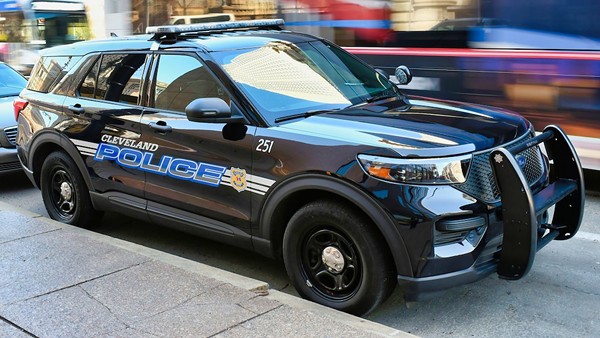Cleveland, OH
Traffic Cases In Cleveland Have Declined Dramatically In The Past Decade, Data Shows

Due to a variety of factors, from changes in Cleveland Police policy to an officer shortage, traffic cases in the city have plummeted in the past decade, Scene found.
Through data obtained by public records request, Scene discovered that total traffic cases—from stops by the Cleveland Police, the Ohio State Highway Patrol, Cuyahoga Metropolitan Housing Authority officers and 22 other agencies—have declined roughly 75 percent from 2012 to 2022.
The data, which includes violations spread out across the five police districts, reflects a decade of alterations in police and traffic enforcement policy.
Cleveland Police declined to comment on this story.
Kareem Henton, an organizer at Black Lives Matter Cleveland, told Scene that he believes more nuanced elements are in play, from the effect of ShotSpotter’s expansion across the city in every district to a culture of racial profiling.
Private police forces for Cleveland hospitals have been found to disproportionately ticket Black drivers. The same happens in Bratenahl. And ProPublica found that in recent years 90% of traffic tickets issued by University Circle Inc. officers have been given to Black people.
In 2020, Cleveland Police began piloting what would be a three-year implementation of ShotSpotter technology, acoustic surveillance used to ping officers after gunshot detection, in the Fourth District. In those three years, the city said in a press release, those ShotSpotter detectors captured 10,000 incidents of gunfire, led to 12 lives saved and 66 illegal firearms confiscated from their possessors.
But those ShotSpotter detections, along with too-dark window tints and marijuana-signifying air fresheners, Henton claimed are leveraged by police as excuses for stop-and-frisk searches. And not just for traffic violations, like a near-black front windshield would suggest. (Ohio law dictates that most car windows have to let at least 50 percent light in.)
“Those stops lead to other things,” Henton said. “It was never about the tint to begin with: they wanted to see who was driving. They wanted to see if they had warrants. They wanted to see if they had a driver’s license. If they had anything in the car. That’s what those [stops] are about,” he said.
Other than Henton’s claim of officers using the pine-tree freshener reasoning—which is legal in Ohio—it’s possible that the overall decline in traffic cases mirrors the gradual fall in full-time patrol officers across the city. Last year, Cleveland 19 found that CPD lost 383 officers in the past few years, with the city struggling to bring in new officers. Fewer patrollers, fewer tickets written.
As far as the Fourth District goes, which is 90 percent Black, Henton remains a skeptic about the reason behind the decline.
“It’s all to CPD’s advantage,” he said. “It’s just a matter of skewing the numbers.”
Subscribe to Cleveland Scene newsletters.
Follow us: Google News | NewsBreak | Reddit | Instagram | Facebook | Twitter